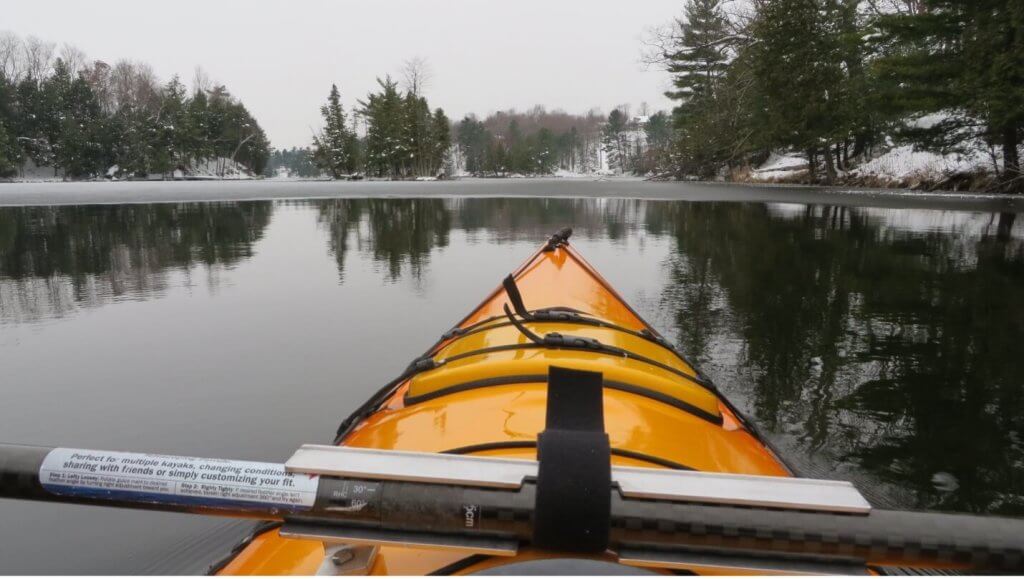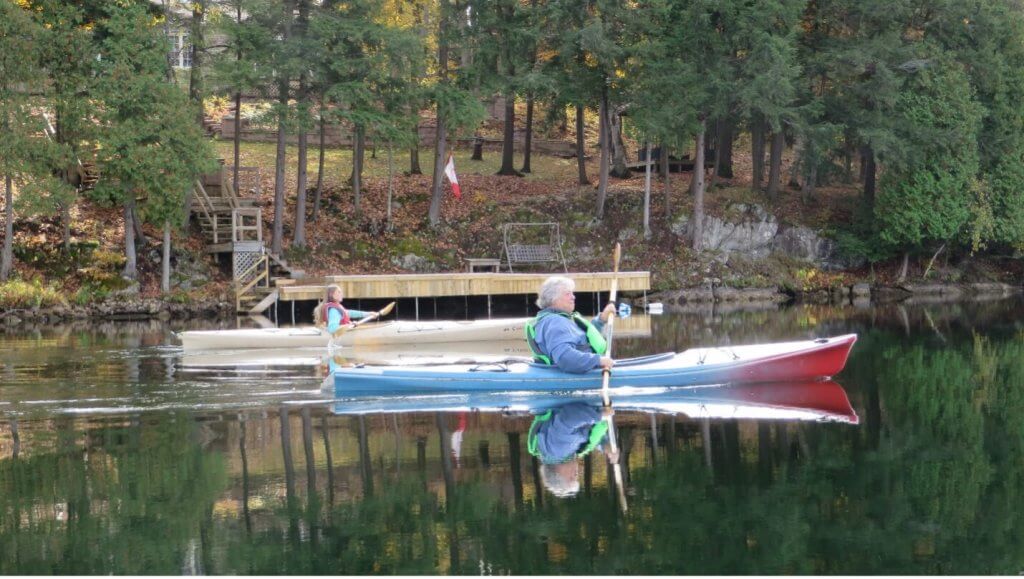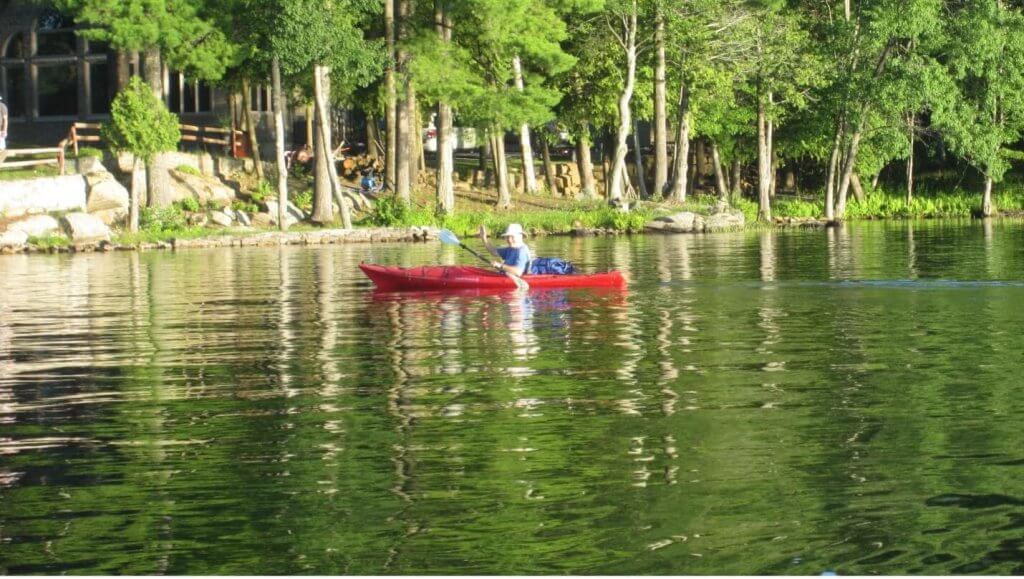“Tracing the origins of the kayak leads us back to the Inuit, Aleut, and Yup’ik peoples of the Arctic, who crafted these small, lightweight watercraft for hunting and transportation. The original kayaks were made from animal skins stretched over a frame of whale bone or driftwood, making them both flexible and buoyant—an essential design for navigating icy waters and hauling catches of fish and seal. Over time, the kayak’s form has journeyed beyond its Arctic cradle, evolving with the cultures and needs of people worldwide.

The journey of the kayak from its roots as a hunter’s vessel to a versatile craft for sport and recreation reflects human ingenuity in adapting tools to diverse environments. In modern times, kayaks continue to be revered for their sleek design and functional elegance, taking various forms to accommodate leisure paddling, whitewater challenges, and long-distance expeditions. For those interested in embarking on their own paddling journeys, it’s crucial to start with a solid foundation in kayaking basics. The historical journey of the kayak showcases the progression of craftsmanship and design, intertwining with the expanding scope of human aquatic adventure.
Key Takeaways
- Kayaks originated with Arctic Indigenous peoples for hunting and transportation.
- Their design has evolved to match diverse uses, from recreation to competitive sports.
- Modern kayaks reflect a long history of design innovation and cultural significance.
Origins and Early History
Indigenous Peoples and Kayak Inception
The Inuit, Aleut, and other Indigenous cultures of the Arctic region engineered the kayak, which plays a pivotal role in their history. This craft was not merely a boat but a survival mechanism tailored for the icy waters of areas like Greenland. The term ‘kayak’ actually means “hunter’s boat,” as these vessels were crucial for tracking and hunting seals, whales, and other marine life.
Materials and Construction in Ancient Times
Wood, driftwood, and whalebone formed the frame of ancient kayaks, with animal skins such as seal skin meticulously stretched and sewn over it. The construction methods varied, but the primary goal was always a watertight vessel that was light yet resilient. The kayak distinguished itself from the canoe due to its closed deck, which helped prevent water from filling the boat in the choppy, frigid waters of the Arctic.
The Aleut called their version of the kayak a baidarka, which was notable for its bifurcated bow.
By leveraging local resources like bones for tools and bracing, they turned what the land offered into a sophisticated piece of technology well ahead of its time. As these innovative watercraft gained attention, they eventually paddled their way into Europe, where their design influenced leisure boating and competitive sports.
Evolution and Expansion

The history of the kayak has seen significant transformation from its origins to the present day, especially once the Europeans adopted it and innovations in materials and design began.
European Adoption and Modification
In the mid-1800s, European adventurers like John MacGregor were integral in modifying kayaks for leisure and sport, leading to a surge in popularity across Europe. MacGregor’s design modifications contributed to the birth of kayak sport with his own designed vessel named ‘Rob Roy.’
Advancements in Kayak Design and Materials
Material Evolution:
- Traditional: Skins over frames
- 1940s: Introduction of fiberglass
- 1980s: Polyethylene revolutionizes production
This shift in materials led to modern kayaks that are more durable and accessible. Notably, the introduction of rotomolded polyethylene in the 1980s created a surge in plastic kayaks, appealing for their lower cost and high durability. Kayak design similarly evolved, with advances in hydrodynamics fostering boats tailored to a variety of water conditions, from tranquil lakes to turbulent oceans.
The evolution in kayak materials, such as the use of polyethylene and fiberglass, coupled with design innovations, has significantly expanded kayaking’s appeal and accessibility. This has transformed the kayak from a simple utility craft into a versatile piece of recreational and sporting equipment that resonates with people around the world.
Modern Usage and Trends

In recent years, kayaking has seen a surge in innovation and specialization, with models designed for every conceivable use, from serene lake paddling to adrenaline-fueled river conquering. The variety of kayaks available today is staggering, ranging from lightweight touring models to sturdy and ergonomic designs meant for fishing to specialized sea kayaks. Innovations have led to kayaks in varied sizes and shapes, with some offering modular designs that can be adjusted for different purposes. Sustainability is also on the radar, with manufacturers exploring eco-friendly materials to reduce environmental impact.
Cultural and Environmental Impact
Kayaking doesn’t just serve recreational purposes; it has also become a symbol of sustainability and connection with nature. As people seek out ways to reduce their carbon footprint, hand-powered kayaks have grown in popularity for their minimal environmental impact compared to motorized boats. Initiatives that encourage recycled materials for manufacturing kayaks are gaining traction, highlighting the innovation within the industry towards eco-conscious design. Moreover, as kayaking allows for intimate interaction with aquatic environments, it has raised awareness about the importance of preserving our rivers, lakes, and seas.
Frequently Asked Questions
Who invented the first kayak, and when?
The first kayak was invented by the Inuit, Yupik, and Aleut tribes over 4,000 years ago. These Indigenous peoples lived in the Arctic regions of North America and parts of Russia.
What were the original purposes and functions of kayaks?
Originally, kayaks served as practical hunting and transportation vessels for Arctic Indigenous peoples. They were crafted for navigating the harsh and icy waters while hunting marine animals.
How have kayaks evolved from their early designs?
Since their inception, kayaks have transformed significantly. Early kayaks were crafted from wood and seal skins, but now materials like polyethylene and advanced composites are used for enhanced durability and performance.
What materials and technologies are used in the construction of contemporary kayaks?
Modern kayaks are constructed using a variety of materials, including rotomolded plastic, fiberglass, Kevlar, and carbon fiber, offering options that prioritize durability, lightweight handling, or speed. Advanced kayaking technology continues to improve the vessels’ efficiency and user experience.
